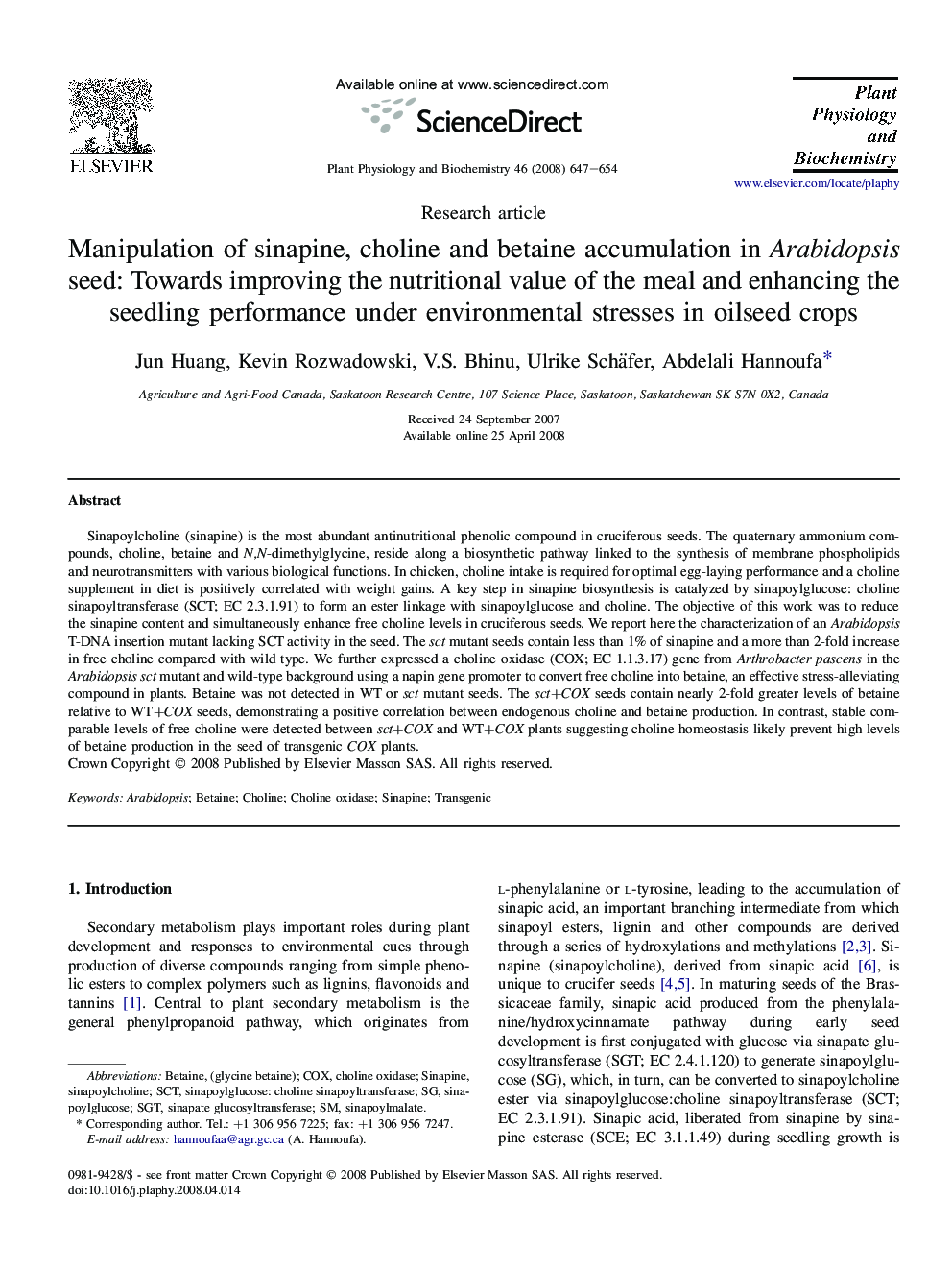| Article ID | Journal | Published Year | Pages | File Type |
|---|---|---|---|---|
| 2016804 | Plant Physiology and Biochemistry | 2008 | 8 Pages |
Sinapoylcholine (sinapine) is the most abundant antinutritional phenolic compound in cruciferous seeds. The quaternary ammonium compounds, choline, betaine and N,N-dimethylglycine, reside along a biosynthetic pathway linked to the synthesis of membrane phospholipids and neurotransmitters with various biological functions. In chicken, choline intake is required for optimal egg-laying performance and a choline supplement in diet is positively correlated with weight gains. A key step in sinapine biosynthesis is catalyzed by sinapoylglucose: choline sinapoyltransferase (SCT; EC 2.3.1.91) to form an ester linkage with sinapoylglucose and choline. The objective of this work was to reduce the sinapine content and simultaneously enhance free choline levels in cruciferous seeds. We report here the characterization of an Arabidopsis T-DNA insertion mutant lacking SCT activity in the seed. The sct mutant seeds contain less than 1% of sinapine and a more than 2-fold increase in free choline compared with wild type. We further expressed a choline oxidase (COX; EC 1.1.3.17) gene from Arthrobacter pascens in the Arabidopsis sct mutant and wild-type background using a napin gene promoter to convert free choline into betaine, an effective stress-alleviating compound in plants. Betaine was not detected in WT or sct mutant seeds. The sct+COX seeds contain nearly 2-fold greater levels of betaine relative to WT+COX seeds, demonstrating a positive correlation between endogenous choline and betaine production. In contrast, stable comparable levels of free choline were detected between sct+COX and WT+COX plants suggesting choline homeostasis likely prevent high levels of betaine production in the seed of transgenic COX plants.
